Click below to watch the video
To silence objections, General Hajjaj suppresses the old-school Muslims, even putting to death some of the Companions of the Prophets. By the end of his reign of terror, the Caliph hold complete authority over civil and religious matters, and all objections to the new Qibla are silenced.
Transcript
Video #27 This is a general transcript of a Dan Gibson video in the series: Archeology and Islam.
Hello, I am Dan Gibson, and this is another video in the series Archeology and Islam. As we have pointed out earlier in this series of videos, according to our archeological studies of the earliest mosques, the very first Qibla direction was Petra. All the surviving mosques that I could find, from the first 100 years of Islam, faced towards the city of Petra in southern Jordan. In this video we want to start by noticing a change that came when Mu’awiyah became the first Umayyad Caliph. It may not seem like a great change to us today, but it started something in the early Islamic empire. Up until this time, the Caliph was both the religious ruler and the Political ruler. Let’s illustrate the Caliphs like this: RELIGIOUS-political.
This is the image that we have today of religious leaders in Islam. And indeed the first Caliphs ruled from the Holy City of Medina and they led the spiritual life of the growing community.
However, when Mu’awiyah became caliph, a subtle change took place. For many years he held the power position of Commander of Syria. During this time he built a large residence in Damascus from where he managed his section of the Islamic world. Eventually, when he was made the Caliph, he continued living in Damascus, and set up his court there. At the time I am sure it seemed a natural thing, but it began a substantial shift away from the influences of the three leading religious cities, Mecca/Petra, Medina, and Kufa. By 41 AH (662 AD) the Caliphs court was firmly established in Damascus. But the change was deeper than just a physical change of location. Let me illustrate this new caliph this way: Small religious, large political. religious-POLITICAL. Remember previous caliphs were large religious, small political. RELIGIOUS-political. But a change had been made, and this was the pattern for centuries to come. Mu’awiyah did not display the same piety and sense of justice that was displayed by the first four Caliphs, known as the Rashidun Caliphs. Mu’awiyah’s focus was on establishing Islam as a strong political entity. As s a result, he put down several major rebellions with shocking violence. Then he set about organizing the Islamic world. As a result he was the first caliph whose name appears on coins, inscriptions, or documents of the emerging Islamic empire. In order to build his administration, Mu’awiyah used many Christian bureaucrats, such as Sarjun ibn Mansur who was head of the tax administration.
I don’t think Mu’awiyah realized how much of a change he was introducing, and the reaction he would get from the more religious and pious people in the three religious cities. These three holy cities were: Medina, Kufa, and the Holy City of Petra/Mecca. These cities were soon hotbeds of rebellion against the Islamic bureaucracy in Damascus.
This continued on until Ibn Zubayr (عبد الله ابن الزبير ابن العوام) the governor in Petra/Mecca was elevated to the role of Caliph by the people of the city. Once this declaration of Caliph was known, it began a civil war between the Umayyad’s in Damascus, and Ibn Zubayr in Petra/Mecca. This war lasted twelve years. In the middle of that war, it appears that Ibn Zubayr had opportunity to take the black rock, which was in his possession, and move it to a remote place far away in Saudi Arabia, where the Umayyad armies could not easily find it. While we are not sure of the exact date, we do know that after this time, the very first mosques were constructed with a Saudi Mecca Qibla. The war then went on for several more years.
In order to understand the events that followed, it is important to understand the character of one man: General Hajjaj ibn Yusuf of the Umayyad armies. (أبو محمد الحجاج بن يوسف بن الحكم بن عقيل الثقفي) He wielded incredible political and military power, and he would leave his mark on Islam forever after that.
General Al-Hajjaj ibn Yusuf was born about 661 AD or 41 AH near Ta’if. In one of our videos, we identify this with Rum in modern day Jordan. Ta’if means surrounded, and indeed, the Rum location is surrounded by cliffs on all sides except one open area which was walled. And the location has a Temple to Allat just like the descriptions of Ta’if in ancient literature.
At the time when Hajjaj ibn Yusuf as born, Islam had grown to include Egypt; and during his youth Islam it expanded across North Africa as well as starting up into Asia. Mu’awiyah became Caliph and choose Damascus as his city, and battled with Ali. So Hajjaj grew up hearing stories of the cruelty and absolute power of the Caliph. Hajjaj’s ancestry was not particularly distinguished; he came of a poor family whose members had worked as stone carriers and builders.
As a boy, al- Hajjaj acquired the nickname Kulayb or ‘little dog,’ a name he could never shake. Hajjaj was a quick learner. He originally became a schoolteacher in his home town, which was another source of derision to his enemies, who sought to be great warriors.
Soon after Marwan became Caliph in 64 AH, al- Hajjaj, then 24 years old, left his home town and went to the capital, Damascus, where he entered the security force of the caliph. There he attracted the attention of Abd al-Malik by the quick and efficient way he restored discipline during a mutiny of the troops appointed to accompany the caliph on a campaign against Mus’ab ibn al-Zubayr in Iraq.
As a result, the caliph entrusted him with command of the army’s rear-guard. It was during this time, that Abu al-Muhajir Dinar, the Muslim General in North Africa started having trouble with the caliphs in Damascus. Abu al-Muhajir Dinar, in his anger with Damascus, changed the Qibla of his mosque to face south, away from the squabbles in the Middle East, and instead placed the mosque’s latrines directly between his mosque and Petra. You can learn about that in the video Parallel, in the series The Qibla Story.
When Ibn al-Zubayr was declared Caliph by the people in the Holy City, caliph Abd al-Malik turned to his most trusted commander, and sent him to deal with the rebellion. The caliph commanded Hajjaj to negotiate with Ibn al-Zubayr and to assure him of freedom from punishment if he surrendered, but, if the opposition continued, to starve him out by siege. He was instructed not to shed blood in Masjid al-Haram.
When the negotiations failed al- Hajjaj lost patience, and sent a courier to the Caliph asking for reinforcements and also for permission to attack the city by force. He received permission for both. When reinforcements arrived he stared a catapult bombardment, as well as direct attacks inside of Masjid al-Haram.
The battle between Ibn al Zubayr and al- Hajjaj took place for six months and seventeen nights in the center of the city. One witness said: I saw the manjaniq (trebuchet) with which [stones] were being hurled. The sky was thundering and lightening and the sound of thunder and lightning rose above that of the stones, so that it masked it. The Ka’ba with its covering was so damaged that it looked “like the torn bosoms of mourning women.” The siege lasted for seven months and in the end several thousand of the men in the city had gone over to Hajjaj, including two of Ibn al-Zubayr’s sons. In the end Ibn al-Zubayr and his youngest son were killed in the fighting. They were in a fortified ruined building near the Ka’ba. And so General Hajjaj won the battle for the Holy City (Petra/Mecca). But many people were upset with how violent the attack had been, and that blood had been shed in Masjid al Haraam, whose very name: The Forbidden Masjid meant that shedding blood, even of animals was forbidden. Hajjaj them moved on, as other cities, like Medina and Kufa were in rebellion.
As a reward the caliph made al- Hajjaj the governors of the Hejaz, Yemen, and al-Yamama. Remember Yamama, it will be import to us later. It is located here in Saudi Arabia, between Petra/Mecca in the north and the new Mecca in the south. It was at this time that Hajjaj began to exercise his growing authority. He was keenly aware of a growing rift between the old school Muslims and the new emerging powers in Damascus.
Hajjaj had several characteristics that made him popular with the ruling caliphs. First, he was fiercely loyal. There was never any doubt about who he would support. Would he support the caliph? Absolutely! Second, he was ruthless, and could be counted on tackling difficult issues. And third, he was very clever when dealing with people. The Umayyad caliphs in Damascus were pre-occupied with wars and rebellions within the empire, as well as the expansion of the empire outward. The empire also needed better administration, so much of the focus of the caliph was on creating and maintaining this infrastructure. The main army was active in marching farther and farther afield. The army not only supported themselves by conquering, looting, and obtaining taxes, they also sent a percentage of money back to Damascus. But the biggest issue the Umayyads faced was unrest and rebellion at home. Hajjaj proved himself a useful and loyal commander, who could be trusted to put down rebellions, even if they were the old-school Muslims who were uncomfortable with what was happening in the Holy City.
When Hajjaj and his troops marched into Medina, they discovered that the source of much unrest came from the old-school Muslims who did not agree with the changes that were happening.
For instance, when Abu al-Muhajir Dinar started using his African Qibla, no one challenged him. Sure he was replaced by General Uqba ibn Nafi of the Quraysh, but even Uqba’s tomb and the new mosques in North Africa used the new Qibla. So when the Companions of Muhammad spoke out, Hajjaj made them an object of derision. Listen to what Al Tabari tells us: (Tabari Vol 22: page 2-3)
In this year, it is reported, al-Hajjaj b. Yusuf dismantled the structures of the Ka’ba that Ibn al-Zubayr had put up. The latter had incorporated the Hijr inside the Ka’bah and given the Ka’ba two doors; al-Hajjaj restored it to its original form. This we can see today in Petra.
He then went back to Medina, in Safar (June-July) and stayed there three months, treating the people of Medina harshly and arbitrarily. He built a mosque there, in the area of the Banu Salimah, which is still known by his name (As far as I know, that mosque no longer exists). He treated the companions of the Messenger of God with contempt, forcing them to wear heavy seals around their necks.
According to Muhammad b. ‘Umar-Ibn Abi Dhi’b: Someone saw Jabir b. ‘Abdullah with a seal on his hand. According to Ibn Abi Dhi’b: Isbaq b. Yazid saw Anas b. Malik with a seal around his neck; al-Hajjaj did that to humiliate him.
According to Ibn ‘Umar-Shurabbil b. Abi ‘Awn-his father: I was there when al-Hajjaj sent for Sahl b . Sa’d and asked him, “What was it that prevented you from supporting the Commander of the Faithful ‘Uthman b. ‘Affan?” He replied, “But I did!” Al-Hajjaj said, “You are lying!” Then he ordered a lead seal put on his neck. Tabari Vol 22: page 2-3
Balaadhuri (Ansab XI,68) tells us that the placing of seals was an indication of Dhimmah, which indicates payment of taxes among Dhimmis. (These are the people who are subjugated by Islam).
This persecution continued for several years. Do you see what was happening? Hajjaj was using his powerful position to reduce the influence of those Muslims where were of the old school. Those were the Muslims who had been with Muhammad.
Think about it, many of the old school were soldiers who had gone off to the far ends of the Islamic empire, to fight. But at home, hew ideas, new thoughts, new practices were emerging. Hajjaj was instrumental in silencing the old school, even to dealing harshly with the Companions of the Prophets. According to Ibn ‘Abd Rabbih, (‘Iqd, Cairo, 1940), V, 36-41) al-Hajjaj’s further abuse of Anas two years later, in al-Basrah, prompted the latter to write a letter of complaint to ‘Abd al-Malik, who was furious and convinced al- Hajjaj to apologize; (a variant of this story appears also in Ibn al-Atha , Kamil, IV, 385-87.) We will come back to Anas at the end of this video. During his lifetime, Al- Hajjaj persecuted the companions of the prophet, and eventually he actually killed four Sahaba of Muhammad.
Al-Hajjaj also tortured and killed the dearest and closest companions of ‘Ali, such as Kumayl, Qanbar and Sa’id to name, but a few of the many hundred victims. Al-Ḥajjāj was an extremely capable and ruthless statesman, strict in character, but also a harsh and demanding master. He was widely feared by his contemporaries and became a deeply controversial figure, and later an object of deep-seated enmity as he did thing differently than what the caliphs themselves desired. Hajjaj did not always need a reason to put people to death. He would select some small thing and use it against them.
Tabari Vol 39:pg270 tells us:
Al-Hajjaj waited until Kumayl came to collect his`ata’ (pension.) Al-Hajjaj seized him and said to him “You are the one who treated caliph ‘Uthman in such a poor manner?” and he said other things as well. Kumayl retorted: “Do not put so much blame on me, and do not pour a mountain of sand on me. It was only that the man had slapped me, then asked me to be patient, and I forgave him, so which one of us was the evil one?” Then Al-Hajjaj gave the order, and Kumayl was put to death.
In 75 AH Caliph Abd al-Malik needed a strong supporter and ally that he could trust. So he appointed al- Hajjaj as governor of Iraq. This placed Hajjaj in a very powerful position, over the entire eastern half of the caliphate. The following years were filled with bloody wars, putting down rebellions and ruling with an iron fist. Hajjaj even managed to arrange marriages between his family and the caliph’s family.
What interests us the most is the construction of the city of Wasit in the year 83 AH and Wasit al-Qasab in 95 AH. A number of interesting mosque constructions or renovations took place during this time. As archeological evidence now shows us, the Qiblas of these mosques did not all agree.
The first striking evidence is that al- Hajjaj ’s mosque in Wasit faced a spot directly between Mecca and Petra. This is the meaning of the word Wasit. It means Between. What was it between? It was between the old Qibla of Petra/Mecca and the new emerging Qibla of the new Mecca in Saudi Arabia.
So during the time that Hajjaj was in power, other important mosques in Damascus, Bosra, the desert palaces, the city of Harran, and even the main mosque in the city of Raqqa in Syria were all constructed facing the Between position. At least twenty more mosques, some of them major mosques were built under al- Hajjaj’s leadership, and they all faced a spot between Petra and Mecca.
Look here at the congregational mosque in Yamama. What makes this mosque special is that Yamama is north of Mecca and south of Petra. And yet, the Qibla of this mosque faces north, away from Mecca, towards the between position.
Now why would Hajjaj pick such a strange Qibla? If you think about it, al- Hajjaj would have distained the original city, since he had fought against it and destroyed it. Smashing down the old temples, and destroying the original Ka’ba. I am sure that he was upset with the Block Rock being moved to Mecca in Saudi Arabia, and he would have considered them as rebels. And while some Muslims were embracing this new location for Mashjid al Haraam, al- Hajjaj chooses his own Qibla, half way between the two. Perhaps pride had something to do with it. Hajjaj had the power to do this. And he could threaten and even kill anyone who opposed him. Later after his deal he was criticized for it and he brought criticism down on Caliph Walid who allowed it. Later writers such as Jahiz includes the setting of the qibla of Wasit among the misdeeds of the caliph, as it began a dangerous precedent.

Basri's comment
So how did al- Hajjaj convince the caliph to let him pick his own Qibla? Well, al- Hajjaj had an inside track. His daughter became the wife of Masur, who was the son of the caliph.
What is astounding is that so many of the later mosques built under the Umayyads faced this between positions. So far we have found over 20 mosques. At the very same time, there were mosques being built facing the new Qibla in Mecca, and at the same time there were new mosques being built that face the old Qibla of Petra. So why did people accept Hajjaj’s new Between Qibla? First, it was because of the power that Hajjaj wielded, and because of the terror that he caused among the people.
For example, this story has come down to us. (Tabari Vol 39, pg 224)
A man known to us as al-Hasan went to see Hajjaj. Hajjaj asked al-Hasan why he was always so disrespectful towards him. He, Hajjaj was the ruler, but Hasan was not only disrespectful, he was also influential in giving legal opinions in the mosque. Hasan replied that he could only say what God has said. Hajjaj challenged him: And what does God say? Hassan took the opportunity to challenge Hajjaj on the topic of his Qibla. Hasan said: “We appointed the qiblah which you have been observing, only that we might know those who would follow the messenger from those who would turn on their heels, though it was a big thing except to those whom Allah guided.” Also, Hasan added: “Ali was one of those directed by God to the right way.” Then Al-Hajjaj raged and bent down, striking the ground. Hasan fled and no one stood in his way. Then Hasan went into hiding until Hajjaj died.
Notice the topic that Hasan chooses when confronting Hajjaj. It was the Qibla - especially Hajjaj’s Qibla. This is an example of the political rulers with their military might, their spies, and their intrigue, opposing the old school religious leaders.
Later, when he was safe al-Hasan said, “I just came from a little squinting man, a short person wagging the few hairs he had and pointing at me with short fingers that rarely knew reins of holy war. By God, even though they ride non-Arabian horses and climb the pulpits, the dishonor of sin is pendant from their necks. God refuses to do anything but disgrace those who disobey Him; He will not cease to teach them lessons to their persons and to use them as examples for the believers. Oh God, kill him as he killed your Sunna, or the customs and practices of the prophet.
Here Hasan claims that Hajjaj had even changed the Sunna, or customs and practices of the prophet.
When people ask me how the Muslim world would stand by while the Qibla was changed, I realize that they do not know the history of Islam very well, and the power and influence wielded by the likes of Hajjaj. One by one, the Muslims of the old school were silenced or eliminated. Remember, this is only 80 years after the founding of Islam.
uslim presence is spread very thinly over the Islamic world. The vast majority of the original Muslims are spread across the Muslim empire, many of the men in the far off armies in North Africa, or in Asia. The bulk of Muslims at this time are new converts into Islam; and many others are just observers, they are dhimmi, under the influence of Islamic rulers. They are following the power and influence of the Caliph. Thousands of Ibn Zubayr’s followers had deserted him and had joined Hajjaj. Ta’if was under the thumb of Hajjaj. Medina had been subjected. Kufa was in Hajjaj’s hands. The Caliph was in Damascus. Who would dare to object?
People tend to follower their leaders. And since the new leaders were supporting changes in Islam, they followed along. When Hajjaj died, the Between Qibla ceased to be practiced, and Mecca in Saudi Arabia became the principle Qibla supported by the Caliphs.
As I read and re-read Islamic history, there is no doubt in my mind that the Caliph and his governors completely controlled and dominated Islam at this time. Anyone opposing their views was suppressed and silenced under the threat of death. The companions of the prophet were systematically singled out, and silenced. Many were put to death.
Let me close with this story about Anas, who is sitting in a mosque in Damascus. While most of the men who started out with Muhammad had long since died in battle, he remembered back to the days when a different Islam was practiced in Arabia.
Two Bukhāri hadiths are below from Al-Bukhari : Volume 1:507
*Narrated by Ghailan: Anas said, “I do not find things as they were at the time of the Prophet.” Somebody said “The prayer is as it was.” Anas said, “Have you not also done to the prayer (what you have done to everything else)? Narrated by Az-Zuhri when he visited Anas bin Malik at Damascus and found him weeping and asked him why he was weeping. He replied, “I do not know anything which I used to know during the lifetime of Allah’s Apostle except this prayer which is being lost.*”
During the height of Hajjaj’s reign of terror, Caliph Walid visited Medina. During this time he spotted Said b. al-Musayyab. Here is what Tabari tells us (Vol. 23: page 180)
Walid then advanced until he stood before Said. He said, “How are you, 0h sheikh?” Said neither moved nor stood, and then said, “Well, praise be to God. And how is the Commander of the Faithful?” Al-Walid said, “Well, praise be to God,” and he departed, saying to ‘Umar, “He is the last of the old school.
Everyone else had been silenced or eliminated. Now there was full acceptance of the changes brought about by the reformers. Damascus was the ruling city, Petra/Mecca was in ruins; the Holy City of Mecca was in a new pristine location in Saudi. It was only a religious/pilgrimage city with no political clout. The Muslims liked it because there were no old temples and idols and no churches or no Christians there, no Jews. It was a truly Islamic city with no trace of other influence.
So you ask me: How could the Muslims accept the change of the Qibla? My answer is simply this: Read Islamic history. Hajjaj ibn Yusuf was a tool in the hands of the caliphate to subdue and silence any objections to their efforts to solidify the Muslim empire, and form it into one cohesive religion, with Mecca in Saudi Arabia as the universal Qibla.
And so that was the end of it. Or was it? You see whenever you try to silence people by force, what they know goes underground. And that is what happened in Islam. There were some people who still knew something about the old days. And they told it to their children, who told it to their children, until it eventually resurfaced. But that is the subject of another video.
I’m Dan Gibson, and this is another video in the series Archeology and Islam.
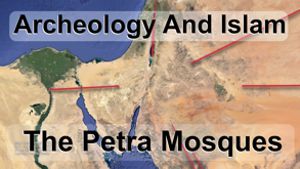
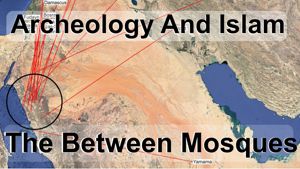
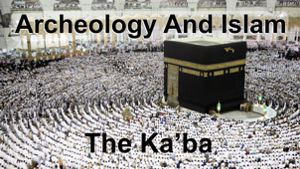
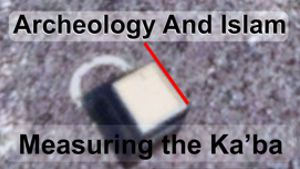

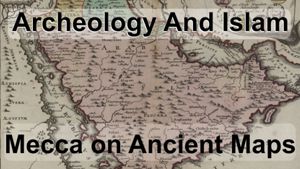

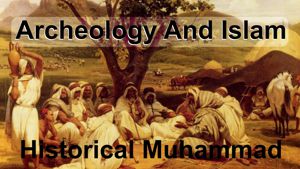
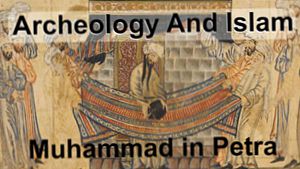
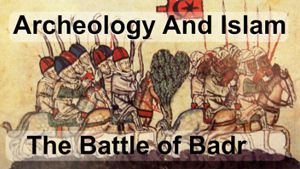
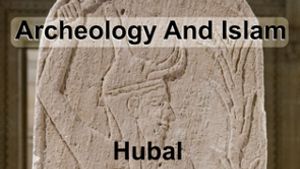
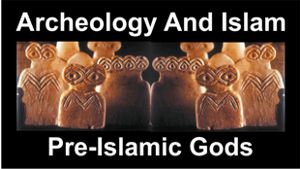
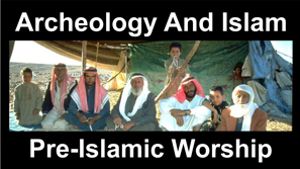


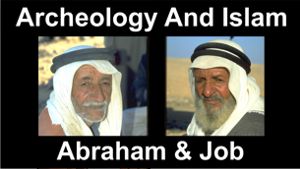
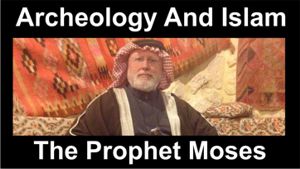


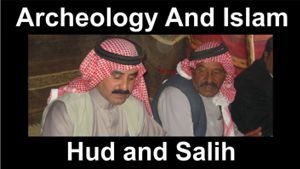
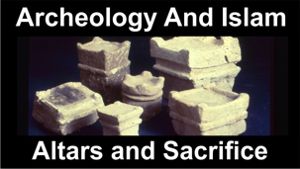

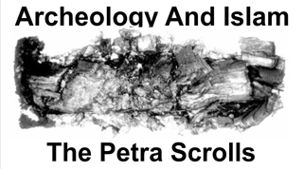
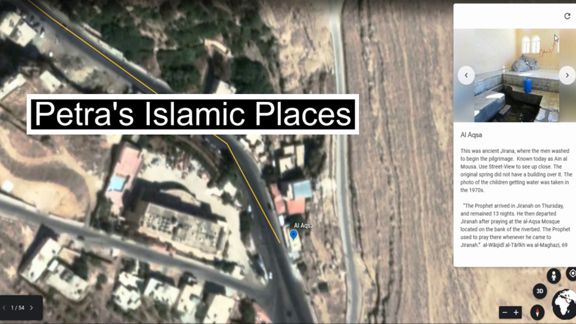

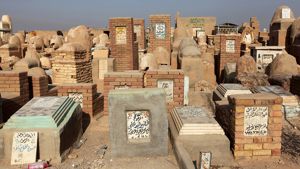
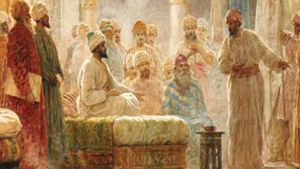
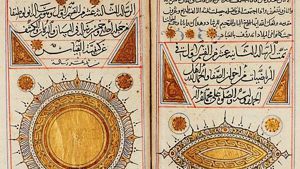
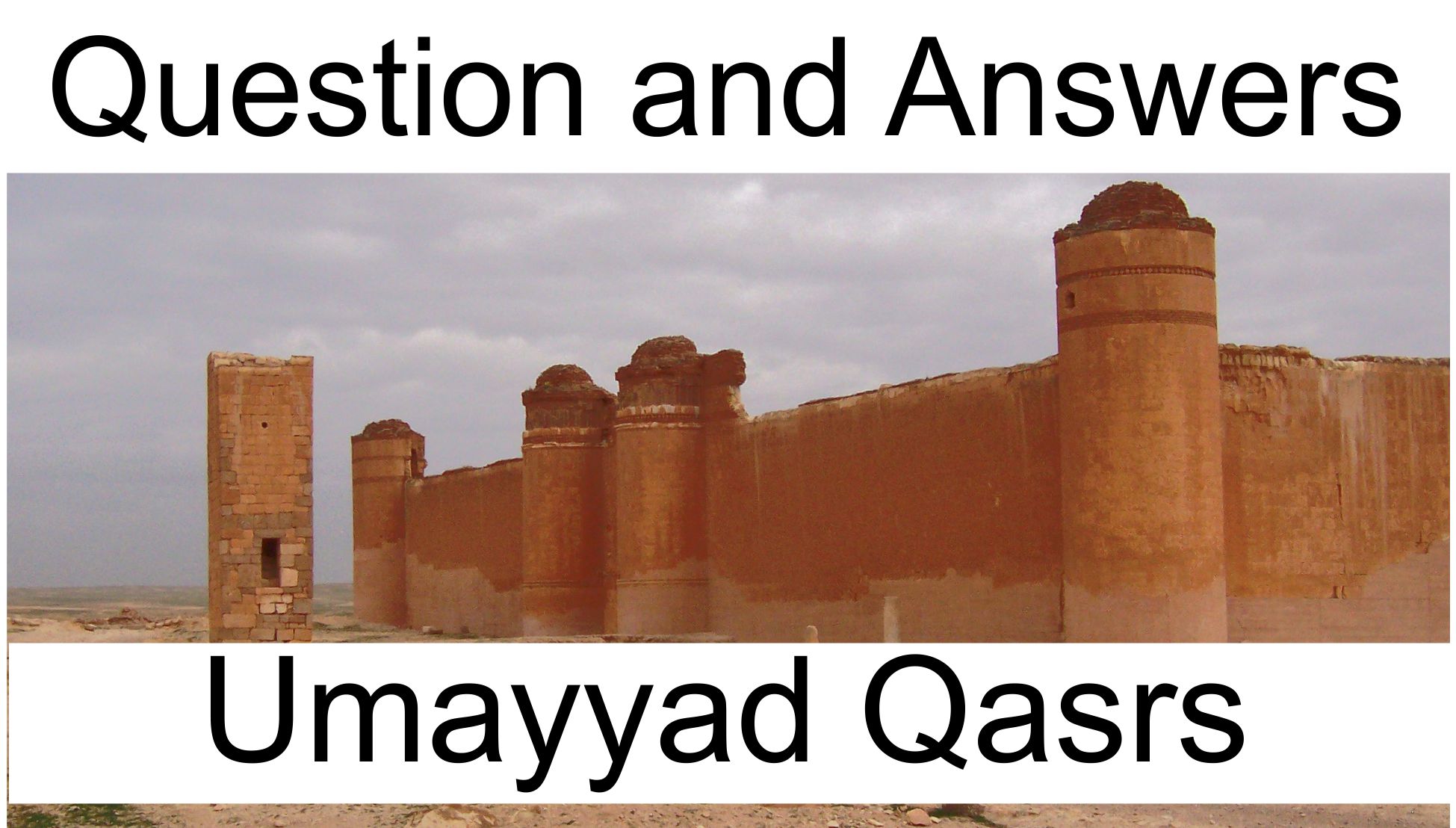
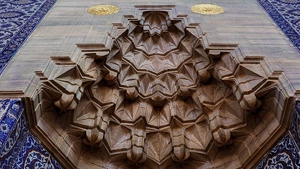
Page Discussion
Membership is required to comment. Membership is free of charge and available to everyone over the age of 16. Just click SignUp, or make a comment below. You will need a user name and a password. The system will automatically send a code to your email address. It should arrive in a few minutes. Enter the code, and you are finished.
Members who post adverts or use inappropriate language or make disrespectful comments will have their membership removed and be barred from the site. By becoming a member you agree to our Terms of Use and our Privacy, Cookies & Ad Policies. Remember that we will never, under any circumstances, sell or give your email address or private information to anyone unless required by law. Please keep your comments on topic. Thanks!